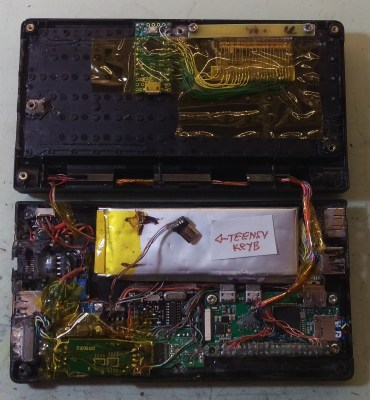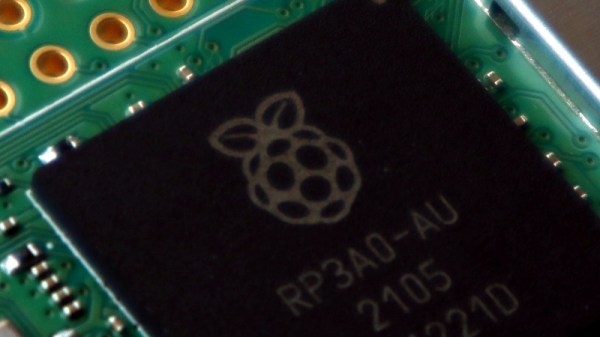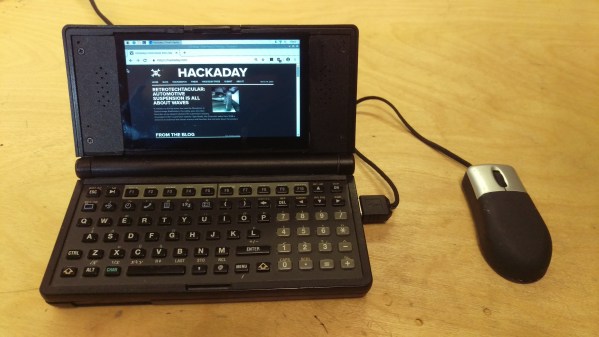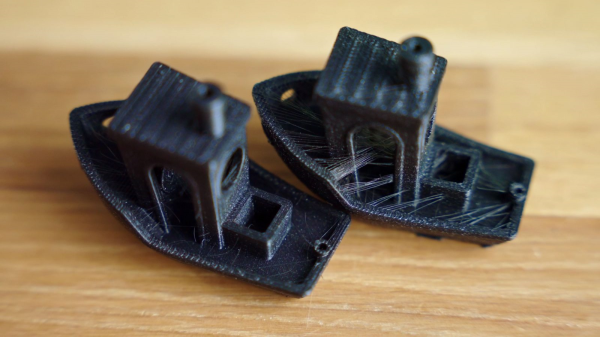It seems like there are two camps, the small group of people who care about UEFI and everyone else who doesn’t really notice or care as long as their computer works. So let’s talk about what UEFI is, how it came to be, what it’s suitable for, and why you should (or shouldn’t) care.
Watch Blender Plugin Make Animated PCB Traces (and More)
[Staacks]’s Blender plugin to animate growth is behind the sweet animation seen above. It’s an add-on that cleverly makes creating slick growth animations easier when using Blender. It isn’t limited to PCB images either, although they do happen to make an excellent example of the process.

The idea is that one begins with an image texture with a structure showing a bunch of paths (like a maze, or traces on a PCB), and that gets used as an input. The plugin then uses a path finding algorithm to determine how these paths could grow from an origin point, and stores the relevant data in the color channels of an output image. That output is further used within Blender as the parameters with which to generate the actual animation, resulting in the neat self-creating PCB seen above. That PCB isn’t just for show, by the way. It’s the PCB for [Staacks]’s smart doorbell project.
Blender is an amazingly comprehensive tool for modeling and animation, and while we’ve covered using it to create high-quality KiCad renders, this kind of animation is really something else.
Here is the GitHub repository for the Blender growth tool if you’re interested in giving it a spin. If you’d like to see more first, watch the video embedded below for a showcase of what it’s capable of, and how it works.
Continue reading “Watch Blender Plugin Make Animated PCB Traces (and More)”
Linux Fu: The Ultimate Dual Boot Laptop?
I must confess, that I try not to run Windows any more than absolutely necessary. But for many reasons, it is occasionally necessary. In particular, I have had several laptops that are finicky with Linux. I still usually dual boot them, but I often leave Windows on them for one reason or another. I recently bought a new Dell Inspiron and the process of dual booting it turned out to be unusually effective but did bring up a few challenges.
If you ever wanted a proper dual-booting laptop, you’ll be interested in how this setup works. Sure, you can always repartition the drive, but the laptop has a relatively small drive and is set up very specifically to work with the BIOS diagnostics and recovery so it is always a pain to redo the drive without upsetting the factory tools.
Since the laptop came with a 512 GB NVMe drive, I wanted to upgrade the drive anyway. So one option would have been to put a bigger drive in and then go the normal route. That was actually my intention, but I wound up going a different way.
Buy A Piece Of The Pi?
The various companies and organisations that supply our community have achieved differing levels of success, with some staying as kitchen-table operations and others reaching the giddy heights of multinational commerce. Perhaps none has risen so far as Raspberry Pi though, as there are reports that the developer of single board computers might be seeking a £400m listing on the London Stock Exchange some time next year. The news is that they have sought the advice of investment bankers over the possibility of a float, seeking to secure further investment to further develop their product portfolio.
We’re not investment advisers here at Hackaday so we’re not going to suggest whether or not to bet your shirt on Pi shares, instead our interest lies in what this might mean for their family of products. It’s an inevitable process for any start-up that achieves major success that it will over time progress from being directed by vision to being directed by commerce, and perhaps a listing could be the culmination of this process. It’s fair to say that we tinkerers probably represent less of a market than education or industry to the Pi folks, so how might we win or lose when the suits take the helm?
A Super Speedy Lightweight Lossless Compression Algorithm
[Dominic Szablewski] was tinkering around with compressing RGB images, when he stumbled upon idea of how to make a simple lossless compression algorithm, resulting in the Quite OK Image Format, which seems to offer comparable file sizes to the PNG format but is so simple it runs up to 50 times faster for compression and up to four times faster for decompression. Implementation can be achieved with a miniscule 300 lines of C. Need a bit more detail on the real-world performance? Well [Dominic] has that covered too, with a complete set of benchmarks for your perusal.
Image formats are one of those things these days that are designed by consortium, with so much complexity wedged in making it hard to implement with limited resources, so we find it very refreshing to see someone going back to basics and producing something super lightweight, and plenty good enough in practical terms.
Other uses for the algorithm could be for super simple video compression, for applications where resource is tight and some low-effort bandwidth reduction would be beneficial. Implementation in a small FPGA would also be quite straightforward, since the memory requirement is quite low also.
The project is very new and already there are some tweaks happening to the format, so the GitHub project code may change without warning to reflect any corrections [Dominic] feels necessary.
Thanks [David] for the tip!
HPi95LX Puts Linux In Your Palm
A few decades ago, palmtop computers were mostly based on MS-DOS, and while many users tried to mimic the UNIX experience, the results were mixed. Fast forward to the present and business-card-sized Linux computers modules abound. Canadian tinkerer [Rune Kyndal] decided to make his own Linux palmtop by sacrificing an old HP-95LX and replacing the guts with a Raspberry Pi Zero and a color LCD screen. We’re impressed with the rich set of features he has crammed into the limited volume of the case:

- Raspberry Pi Zero W
- Color LCD, 4.3 inch, 800×480 w/Backlight
- Capacitive touch screen (not connected yet)
- Stereo speakers + microphone
- Ethernet 10/100
- USB 2.0, 2 each
- RS-232, DE-9 connector
- microSD card
- HDMI
- IR dataport
- Webcam (TBD)
- LiPo Battery w/Charger
One problem that any palmtop faces is how to make a usable keyboard, and HP had one of the better designs. The keys are the same famous style as used in HP calculators. And while no human with normal hands could touch-type on it, the keyboard’s layout and tactile feel was well-suited to “thumb typing”. [Rune] made a good decision by keeping the original keyboard.
While fully functional, this is more of a proof of concept than a polished project. [Rune] primarily used bits and pieces that he had laying around. [Rune] says if he did it again, he would replace all the hot-glued accessory parts with a custom PCB, which is probably good advice. If you want to make your own, check out the project comments for some suggestions.
Do You Really Need To Dry Filament?
There’s a lot of opinions and theories around the storing and drying of 3D printing materials. Some people are absolutely convinced you must bake filament if it been stored outside an airtight bag, even for a few days. Some others have ‘never had a problem.’ So it’s about time someone in the know has done some testing to try to pin down the answer to the question we’re all asking; How bad is wet filament really?
[Thomas Sanladerer] setup a simple experiment, using samples of three common types of filament, specifically PLA, PET-G and ASA. He stored the samples in three environments, on his desk, outside in the garden, and finally submerged in water for a full week. What followed was a whole lot of printing, but they all did print.
Different filaments will absorb water at different rates, depending upon their chemical composition and the environment, nylon being apparently particularly fond of a good soaking. It would seem that the most obvious print defect that occurs with increased water absorption is that of stringing, and other than being annoying and reducing surface quality somewhat, it’s not all that serious in the grand scheme of things. It was interesting to note that water absorption doesn’t seem to affect the strength of the final part.
Continue reading “Do You Really Need To Dry Filament?”

















